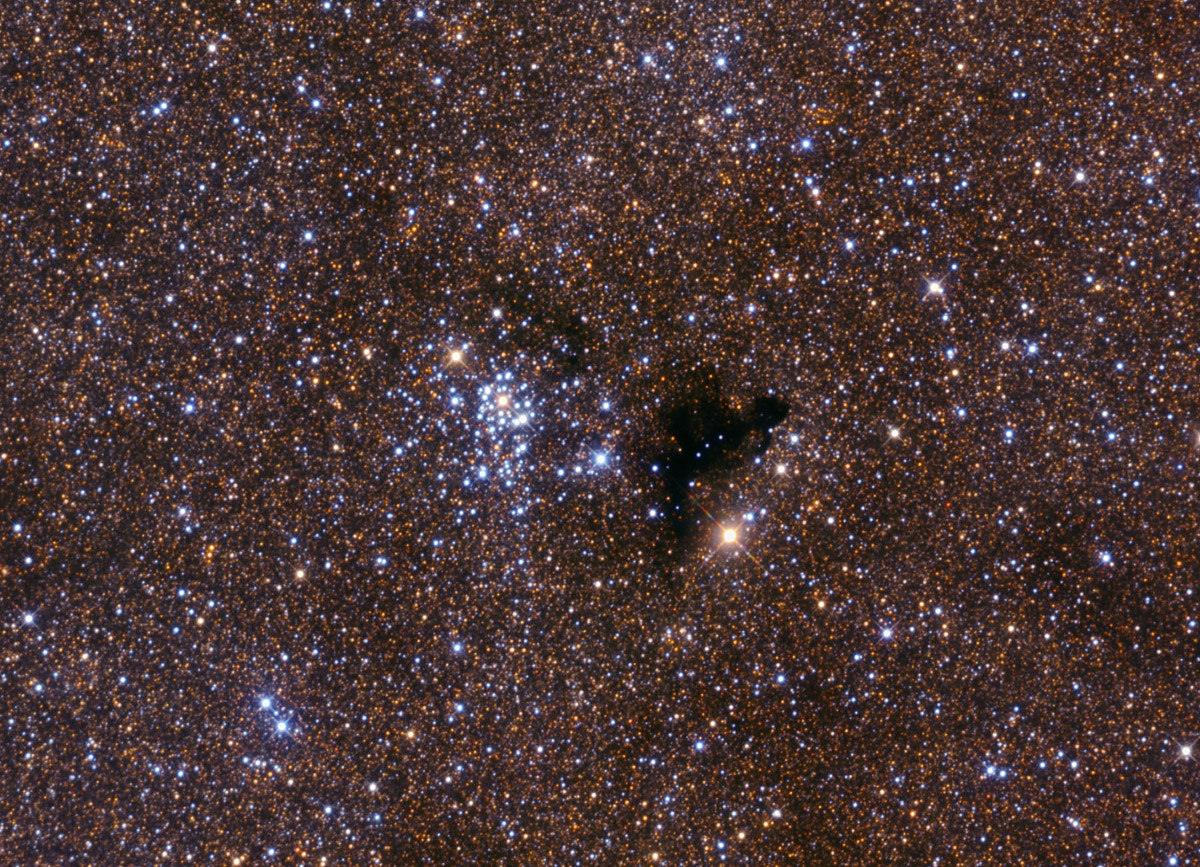
| HOME |
NGC 6520 & BARNARD 86
OPEN CLUSTER & DARK NEBULA in Sagittarius
(ra: 18,03.4 / dec -27:54)
Image taken and calibrated by Ezequiel Bellocchio from AstroPilar
Processed by Sergio Eguivar

Colaboration with Ezequiel Bellocchio ASTROPILAR
August 2013, Pilar, Buenos Aires, Argentina
DATA
TYPE: Open Cluster & Dark Nebula
VISUAL MAGNITUDE: 8 for NGC 6520 N/A for Barnard 76
SIZE: 6 arc minutes
DISTANCE: 7,000 light years
IMAGE INFORMATION
SCOPE: SCOPE: Orion Optics 10" Optimized Dall Krikham
CAMERA: FLI ML 8300
FILTERS: Baader LRGB
SKY CONDITIONS: suburbs skies 35
EXPOSURES: LRGB (300,100,100,100)
OBJECT DESCRIPTION AND IMAGE SESSION
The majority of old stars in our Galaxy, as
in most others, appear yellowish on photographs. This is because the hotter,
bright blue stars have relatively short but spectacular lives. We see these old
stars in vast numbers as the brightest patches of the Milky Way and a powerful
telescope like the AAT reveals them to be as numerous and crowded as grains of
sand, especially in Sagittarius.
Superimposed on this distant background in the photograph is a small cluster of
young blue stars, NGC 6520. In the same region as the cluster is a dark cloud,
Barnard 86. The cluster is at a distance of about 7000 light years and is
probably associated with the dark cloud. The dust is visible only because it
blocks out light from the myriads of stars beyond. (*)
Text selected from
Australian
Astronomical Observatory